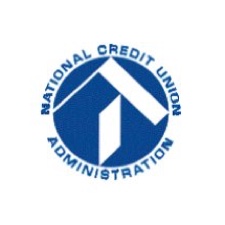Press

Chairman Matz Statement on Associational Common Bond Final Rule
WASHINGTON, DC (April 30, 2015) — This rule represents the first of many significant changes we will be considering this year to allow federal credit unions to expand their fields of membership.
Even as we finalize this rule, the Field of Membership Working Group I created in December is gathering input from stakeholders across the country. The Working Group, chaired by Matt Biliouris, is discussing ideas for additional regulatory relief and process improvements to further streamline field of membership expansions.
To offer suggestions, stakeholders can:
- Participate in one of the Working Group’s teleconferences;
- Call Matt directly in our Office of Consumer Protection; or
- E-mail FOMSuggestions@ncua.gov
After the Working Group makes recommendations to the Board, we’re planning to propose new rules for more expansive community charters, underserved areas, and occupational charters by the end of this year.
In contrast, our rule on associational common bonds was proposed last April mainly to clarify requirements for federal credit union membership. A small number of federal credit unions were forming their own associations with the primary purpose of increasing credit union membership. These groups did not meet the Federal Credit Union Act’s common bond requirement.
That’s why this rule establishes a minimum threshold requirement that an association “cannot be formed primarily for the purpose of expanding credit union membership.”
This threshold is setting a very low bar. It is not a barrier or a burden for any qualifying association.
In fact, of all the associational applications received by our Office of Consumer Protection during the past three years, more than 99 percent of applicants would have met the new threshold requirement.
While the number of associations that did not meet the common requirement is small—less than 1 percent—staff has spent considerable time working to restructure those associations. So this rule will make clear that an association formed primarily for the purpose of increasing credit union membership is not acceptable.
While closing the loophole on the less than 1 percent of associations that were formed primarily for the purpose of increasing credit union membership, we also wanted to take the opportunity to provide regulatory relief.
We felt strongly that credit unions should not be required to wait for approval from NCUA each and every time they want to add an association that clearly meets the common bond requirement. We recognized there are certain categories of associations we don’t need to test to know they qualify. That’s why we proposed seven categories of associations to be approved automatically.
As we hoped, commenters suggested additional categories of associations that will meet the automatic approval criteria. Indeed, input from commenters translated into five categories of associations we’re adding to our list of 12 pre-approved groups.
So I’d like to publicly thank the commenters who contributed to the expansion of relief in this forward-looking final rule.
We’re not only permitting automatic approvals for associations that were routinely approved in the past; we’re thinking ahead and authorizing automatic approvals for associations that will be routinely approved in the future.
For example: In addition to automatically approving specific groups such as Labor Unions, Parent Teacher Associations, Chamber of Commerce members, and many others named in the rule, we will automatically approve any organization that meets the very general purpose of “promoting social interaction or educational initiatives among persons sharing a common occupational profession.”
I requested this open-ended definition to give federal credit unions flexibility to automatically add any well-established workplace association. This open-ended acceptance of workplace associations, along with 11 other pre-approved groups, will expedite approvals for the vast majority of associations.
We confirmed this fact after Vice Chairman Metsger asked our Office of Consumer Protection what percentage of applications would have been approved automatically if this rule had been in place since January 2014. They found that 87 percent of associational applications would have been approved automatically.
So, based on actual historical data, we can now put the impact of this rule into perspective:
- 99 percent of applications would have passed the threshold test;
- 87 percent would have been approved automatically; and
- 12 percent would still have been approved manually.
Going forward, increasing the number of automatic approvals will benefit federal credit unions and NCUA. Credit union officials and NCUA staff will spend less time filling out paperwork and more time fulfilling their respective missions.
Most importantly, automatic approvals will benefit a wide range of consumers and business owners by providing more efficient access to credit union services.
All 12 regulatory relief provisions in this rule are consistent with my Regulatory Modernization Initiative.
So I thank you very much for all of the hard work you’ve done over the past year; and I strongly support this final rule.
